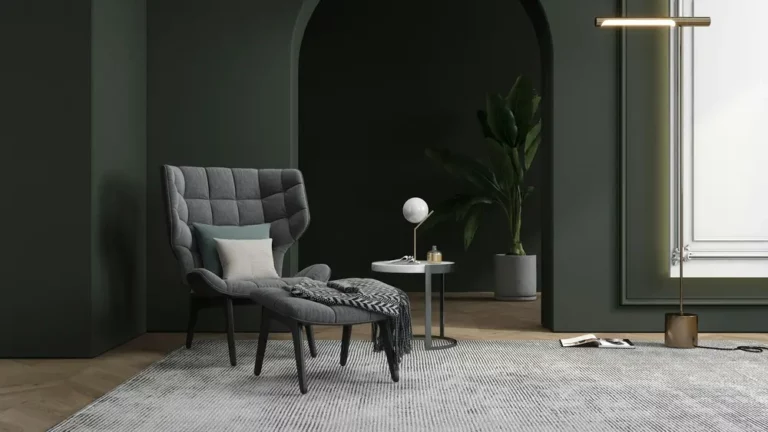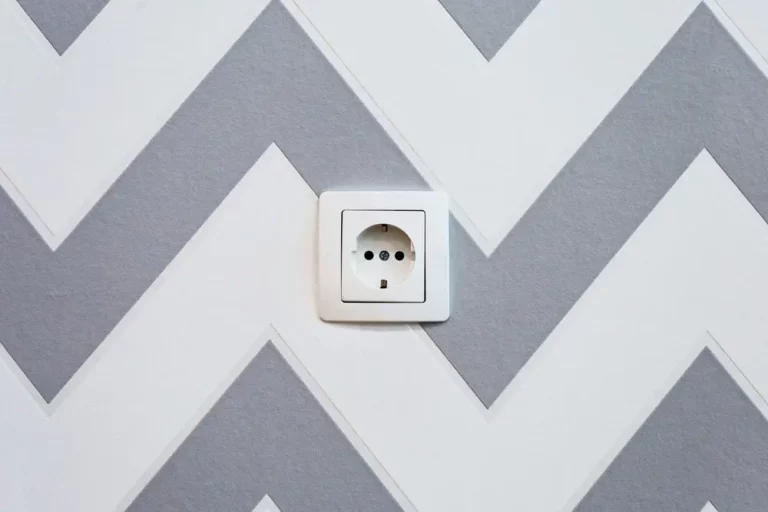Exploring Transitional Spaces: The Vital Role of Foyers, Hallways, and Mudrooms
Ever wandered through a house and wondered why we call certain spaces by specific names? I’ve always been fascinated by how the names of rooms in a house can vary so much depending on where you are in the world. From the cozy corners of a den to the bustling energy of a kitchen, each room has its own personality and purpose.
Let’s dive into the world of room names, shall we? Whether it’s the classic living room where families gather to share stories or a parlor that sounds like it’s straight out of a Victorian novel, I’m here to explore the charming diversity of room names across cultures and regions. Join me as we uncover the stories behind these spaces that make a house feel like home.
Core Living Areas
Diving deeper into our exploration of room names in a house, let’s focus on the heart of the home: the core living areas. These spaces, where the majority of waking hours are spent, pulse with activity and serve multiple purposes. From lounging in comfort to savoring meals, each area has its distinct essence.
Living Room
When I think of the living room, I picture a versatile space that adapts to various forms of relaxation and social interactions. Traditionally, living rooms served as formal settings for entertaining guests, but nowadays, they embody a mix of formality and comfort. Key elements that define a living room include plush seating, ambient lighting, and entertainment units. What sets the living room apart from other areas is its ability to host a range of activities, from quiet reading sessions to lively get-togethers.
Dining Room
Moving on to the dining room, this area is synonymous with communion and celebration. It’s where meals become occasions. Unlike the quick grabs in the kitchen, dining rooms hold space for enjoying food in good company. The central feature, undoubtedly, is the dining table, around which stories and dishes are shared alike. While some might argue that formal dining rooms are becoming less common, I believe they still hold a cherished place in homes that value the ritual of shared meals.
Kitchen
Lastly, let’s stir into the kitchen – often dubbed the heart of the home. It’s no secret that kitchens have evolved from hidden-away service areas to the main stage of daily life. Beyond meal prep, the kitchen has become a hub for casual dining, homework sessions, and impromptu gatherings. With advancements in appliances and layout designs, modern kitchens effortlessly blend functionality with style. Open-concept kitchens, in particular, underscore this shift towards a more integrated living experience, promoting a seamless flow between cooking and communal activities.
In these core living areas, the essence of home life is encapsulated. Through their evolving functions and designs, they continue to foster connections, comfort, and joy within the household. Each of these rooms, with its unique character, contributes to the story of a home, crafting an environment where memories are made and cherished.
Personal Quarters
When I delve into the heart of any home, I can’t help but notice how personal spaces—where we retreat for rest, relaxation, and privacy—tell stories all their own. These enchanted areas, known as personal quarters, are cocoons of comfort and personality. Let’s wander through the most intimate rooms: the master bedroom, children’s bedrooms, and guest bedroom.
Master Bedroom
In my exploration, the master bedroom stands as a sanctuary. It’s not just a place to sleep; it’s a realm where relaxation and personal style intersect, creating a haven of tranquility. This room often hosts the largest bed in the house, accompanied by luxurious linens and an array of pillows that whisper promises of comfort and serenity. Walk-in closets and en-suite bathrooms add layers of convenience and luxury, making the master bedroom a retreat within a retreat.
Children’s Bedrooms
As I turn the corner, the children’s bedrooms burst with energy and imagination. These spaces are more than just places for sleep—they’re realms where young minds can wander and wonder. Bright colors, whimsical themes, and toys scattered like treasures across the floor are common sights. It’s fascinating to see how these rooms evolve with the child, from nurseries adorned with mobiles and soft hues to dynamic spaces filled with action figures, science projects, and the latest tech gadgets. Adaptability is key here, reflecting the growth and changing interests of its young inhabitants.
Guest Bedroom
And then there’s the guest bedroom, a testament to hospitality and thoughtfulness. I’ve always believed that this space should evoke a sense of welcome and warmth, offering visitors a cozy escape. Although it might not be occupied as frequently as other rooms, the guest bedroom is adorned with clean, crisp linens, a comfy bed, and often, a few thoughtful touches like fresh flowers or a stack of books. It serves as a peaceful haven for guests, ensuring their stay is as comfortable and pleasant as possible.
Functional Spaces
In every home, certain areas are designed for specific functions that go beyond sleeping, eating, and relaxing. These functional spaces play a crucial role in our daily routines, ensuring our lives run smoothly. Let’s explore some of these essential rooms.
Bathrooms
I’ve always believed that bathrooms are the unsung heroes of a home. They’re where we start and end our days, serving not just as places for personal hygiene but often as mini sanctuaries. A well-designed bathroom combines practicality with a bit of luxury. Whether it’s a full bathroom complete with a shower and tub or a half-bathroom for guests, functionality and accessibility are key. I love adding plants or using calming colors to create a more relaxing environment. After all, there’s nothing like a warm bath to melt away the day’s stress.
Laundry Room
The laundry room might not be the first room that comes to mind when you think of essential home spaces, but it’s absolutely crucial for keeping our lives in order. Gone are the days when laundry rooms were relegated to dark, damp corners of basements. Nowadays, they’re often bright, airy spaces equipped with high-efficiency washers and dryers. I’ve found that organizational features such as built-in cabinets, drying racks, and folding areas can transform the laundry process from a chore into a more manageable, almost enjoyable task. Plus, incorporating energy-efficient appliances can also help reduce your household’s carbon footprint.
Home Office
With more and more people working remotely, the home office has become a staple in modern homes. It’s a space where productivity needs to be maximized, which is why comfort, lighting, and minimal distractions are so important. I prefer a room with natural light and a view if possible, as it helps keep me energized and inspired throughout the day. Ergonomic furniture is a must to prevent any strain during long work sessions. Additionally, smart storage solutions ensure that everything I need is within reach but out of sight to maintain a clutter-free zone. This space proves that work doesn’t have to feel like work if your environment supports you.
In creating these spaces, I’ve learned that blending functionality with personal style not only makes daily tasks more enjoyable but also turns your home into a truly personal haven.
Recreational Zones
In exploring the many room names throughout a house, it’s impossible not to delve into the heart of where fun and relaxation converge – the recreational zones. These spaces are specifically crafted to enhance our enjoyment and provide an escape from the daily grind. Whether it’s engaging in playful competition, getting lost in a movie, or diving into the depths of a good book, these areas serve as indispensable sanctuaries.
Game Room
The game room, a playground for both the young and young at heart, stands as a testament to leisure and entertainment. Imagine a room outfitted with a pool table at its center, dartboards adorning the walls, and shelves stacked with board games ranging from the classics to modern challenges. It’s not just about the games themselves; it’s about creating a space where laughter and competitiveness intertwine, fostering memorable moments. In my vision, this room is also equipped with comfortable seating for spectators and players alike, ensuring that everyone, regardless of their level of participation, feels included.
Home Theater
As someone who loves the immersive experience of cinema, the idea of a home theater is incredibly appealing. Home theaters have remarkably evolved, bringing the magic of the movies right into our homes. With a widescreen or a high-definition projector casting images onto a blank wall, coupled with a surround sound system, the cinematic experience is unmatched. Plush seating, possibly even recliners, is arranged for optimum viewing pleasure. To further enhance the atmosphere, I’d suggest darkening the windows with heavy drapes and installing acoustic foam to ensure stellar sound quality. The ultimate convenience? Having a mini-fridge or a popcorn machine right in the room for those must-have movie snacks.
Library
For those who find solace in the pages of a book, having a dedicated library within the home is a dream come true. Think of walls lined with bookshelves reaching the ceiling, filled with titles that span genres and eras. A library serves as a quiet haven for contemplation and exploration, where one can travel worlds without taking a step outside. Comfortable chairs, perhaps a cozy reading nook by the window, and the soft glow from a reading lamp create the perfect environment for losing oneself in literature. It’s not just a room; it’s a gateway to endless adventures and knowledge.
As these recreational zones blend seamlessly with the rest of our living spaces, they remind us of the importance of taking time for ourselves, for play, and for the pursuit of interests that bring us joy.
Additional Rooms
While we’ve covered a variety of specialized rooms that cater to hobbies and relaxation, there are a few additional spaces designed specifically to meet the needs of every family member, from the youngest to the fitness enthusiasts.
Nursery
The nursery is a delightful room dedicated entirely to the youngest member of the family. It’s where safety meets comfort, adorned with a cozy crib, changing tables, and soft, soothing colors. I find that the nursery isn’t just a space for the baby to sleep; it’s also a sanctuary for parents to bond with their child, often including a comfortable rocking chair for those late-night feedings and bedtime stories. The ambiance of a nursery is crucial, aiming for a tranquil environment that supports the sleep schedule of a newborn, while also stimulating their developing senses during playtime.
Playroom
Transitioning from the nursery, the playroom is a vibrant and dynamic space designed to fuel the imagination of toddlers and young children. This room is their kingdom, filled with toys, crafts, and books. What I love most about a playroom is its ability to evolve with the child, transitioning from soft mats and baby toys to more elaborate playsets and learning materials. It’s fascinating to see how a well-organized playroom can offer both fun and educational benefits, encouraging kids to explore, learn, and grow in a space that’s all their own. Safety is key, with non-toxic materials and secure storage options to keep the clutter at bay while ensuring everything is within reach for little hands.
Gym
For adults, a home gym has become less of a luxury and more of a necessity, especially for those juggling busy schedules. It’s incredible how setting aside a room for physical fitness can be so empowering. Equipped with exercise machines, free weights, and adequate floor space for yoga mats, this room is a testament to personal health and wellness. I’ve found that having a gym at home eliminates excuses, making it easier to fit in a workout, no matter the time of day. Moreover, it offers privacy and convenience, allowing for a tailored fitness routine that caters to personal goals and preferences. The home gym is not just about physical health; it’s also a space for mental rejuvenation, providing a stress-relieving oasis that’s just a few steps away.
Storage and Organization
When it comes to keeping a home tidy and maximizing space, understanding the purpose and potential of different rooms is key. Let’s dive into some of the most common areas designated for storage and organization.
Garage
For many, the garage is simply a place to park cars to protect them from the elements. However, I’ve discovered it’s so much more than that. With the right shelving and storage solutions, a garage can transform into an organized haven for tools, sports equipment, and even seasonal decorations. I’ve seen garages equipped with workbenches for DIY projects, and wall-mounted racks that make the perfect spot for bikes and gardening gear. The key is utilizing vertical space to keep the floor clear for vehicles.
Basement
Basements often start as blank canvases that can be turned into almost anything. Mine, for instance, has become a hybrid of a home gym and a storage area. What’s great about basements is their cool temperature, making them ideal for storing wine or items that need to be kept out of the heat. However, it’s crucial to tackle any moisture problems to prevent damage to stored items. By adding sturdy shelves and clear plastic bins, organizing seasonal decorations, clothing, and other seldom-used items becomes a breeze.
Attic
Ah, the attic. This space at the top of the house is frequently overlooked, but it’s a goldmine for storage. Since heat rises, it’s important to be mindful of what goes here—seasonal clothing, luggage, and holiday decorations are usually safe bets. I’ve found that labeling boxes clearly and keeping an inventory list makes retrieving items from the attic less of a hassle. Additionally, consider installing a drop-down ladder for easy access and laying down boards to create a stable walking path among your treasures stashed in the attic.
Transitional Spaces
When it comes to the design and layout of a home, not all areas are straightforward or dedicated to a single purpose. Some spaces serve as the connectors or buffers between the more defined rooms, offering functionality in their transition. These are what I like to call “transitional spaces.” They might not be the first areas you think of when you imagine a home, but their importance can’t be understated.
Foyer
The foyer, often the first space you step into when entering a home, sets the tone for the rest of the house. It’s more than just an entryway; it’s the introduction to a home’s personality. Functionally, it acts as a space where outerwear and shoes can be removed, ensuring the cleanliness of the internal living areas. Yet, it also serves an aesthetic purpose, offering a hint of what’s to come. I’ve seen everything from minimalist designs that emphasize space and light, to bold, statement-making foyers that capture attention immediately.
Hallways
Hallways are the arteries of a home, directing flow and movement from room to room. Their importance is often overlooked, given that they’re primarily seen as pass-through areas. However, they’re so much more than that. In my experience, hallways offer incredible opportunities for Art Displays and Lighting that can transform them from mere pathways to galleries of personal expression. Plus, smart hallway design can dramatically improve the sense of cohesion and unity throughout a home.
Conclusion
Exploring the often overlooked transitional spaces in our homes has been quite the journey. I’ve come to appreciate how the foyer, hallways, and mudroom each add their unique flavor to our living spaces. They’re not just areas we pass through without a second thought. Instead, they’re integral to the harmony and functionality of our homes. Whether it’s welcoming guests with a well-curated foyer, transforming hallways into galleries, or keeping our homes organized with a multifunctional mudroom, these spaces deserve our attention. They remind us that every corner of our home has the potential to reflect our personality and meet our needs with style. Here’s to giving these unsung heroes of home design the recognition they deserve!
FAQ – Frequently Asked Questions
Why is the foyer considered important?
The foyer is deemed important because it acts as the first impression of a home’s character. It combines practicality with aesthetic appeal, welcoming guests and setting the tone for the rest of the house through its design and function.
How can hallways enhance a home’s ambiance?
Hallways enhance a home’s ambiance by offering spaces for art displays and strategic lighting. Rather than being mere passageways, hallways can contribute to the home’s overall aesthetic and atmosphere through thoughtful decoration and lighting choices.
How do transitional spaces contribute to home design?
Transitional spaces contribute to home design by ensuring functional and aesthetic cohesion throughout the property. They bridge different areas of the home, provide storage solutions, and present opportunities for decorative elements that unify the house’s design theme.





